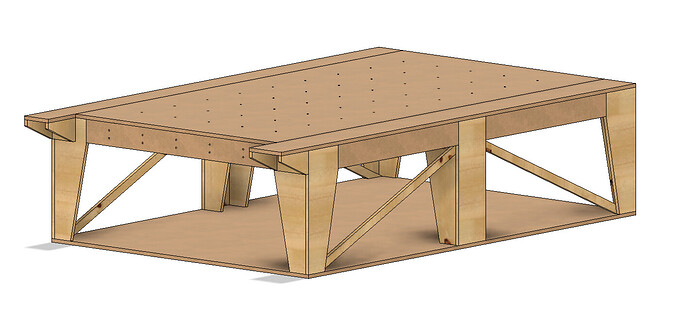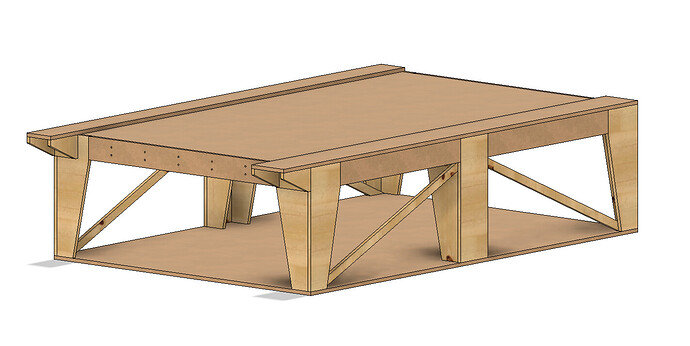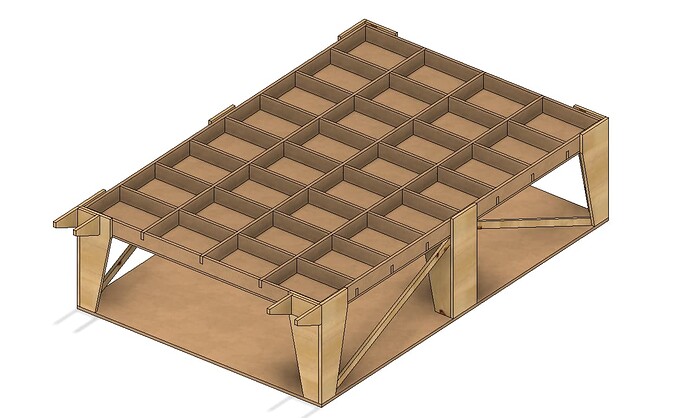I have my lowrider 3 on a rather precarious table build based off Doug’s remix of Ryan’s parametric table. Although I finally have the CNC running, it doesn’t have legs and since the torsion box itself is a tiny bit crooked, I decided to build a new one from scratch, taking advantage of the larger form factor of MDF boards that I have access to (2750x1830mm) to ditch the holes in the sides and create a simpler build. Inspired in their designs, I modeled the following table. I’d hate to make newbie mistakes, so I’m posting this here to catch any important errors/potential improvements
Summary:
The core of the table is a 4x8 torsion box with notched ribs made out of 18mm (3/4 inch) MDF, with both the top and bottom skirts being 12mm MDF. It’s supported around the corners and in the middle of the longest sides by plywood legs and has diagonal braces laterally. On top of the torsion box sit 3 elements: the spoilboard with t-nuts and two long strips along which the gantry rolls. It’s super similar to the original table except it does not have the “wings” as sliders and can have the sliders be made out of a single piece of wood. Below everything is a tray that will be were I store material and boards. The front side panel of the table also has t-nuts so that I can mill things vertically as well in the little space that is available. Below the bottom tray (and not in CAD yet) sit 4 spring loaded wheels so that the table can accomodate to any imperfections in the floor, which in my case might not be so subtle.
My requirements
- full 4x8 work area
- storage for boards
- sturdy and flat
- easty to replace spoilboard
- gantry sliders made out of one single piece
- spoilboard with holes for clamps and/or dog holes
Doubts
- Are diagonal braces necessary? If so, do I need another one for the short side as well?
- how many short and long ribs are necessary for the torsion box? is there a maximum recommended separation?
- Are these legs ok?
- Is this build reasonable?
A few photos
All of this is done in a parametric F360 file, so happy to share if it interests anyone. Thanks in advance!


